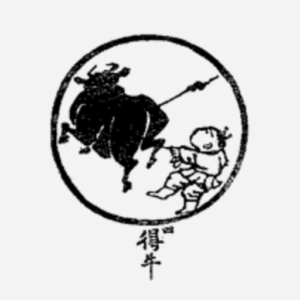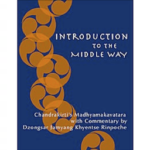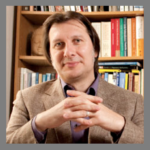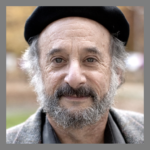
Madhyamakavatara: 8-Week Program Week 4 Pre-Reading
Summary
Date: 28 June
Topic: Refuting the Cittamatra/Yogacara (Mind-Only) school
Text: Madhyamakavatara (Introduction to the Middle Way) 6:45-6:119 (Chapter 6, Verses 45 to 119), pages 155 to 243 in the PDF version. (To download a copy, the instructions are here)
Questions: How should we understand the Buddha’s teaching that all things come from mind?
Keywords: mind, mind-only, consciousness, alaya, Cittamatra
Also available: audio/video recordings and transcript/translations for Week 4.
Pre-Reading (Recommended)

Dzongsar Khyentse Rinpoche (2004) Introduction to the Middle Way
In Week 4 we will be meeting the Cittamatra/Yogacara school, perhaps our toughest opponent in the Madhyamakavatara (Introduction to the Middle Way) in Chapter 6, Verses 45 to 119, pages 155 to 243 in the PDF version.
Pre-Reading (optional)
[Note: pre-readings are arranged alphabetically by author. This is not intended to suggest an order of reading]

Arnold, Dan (2005) ➜”Madhyamaka Buddhist Philosophy”, Internet Encyclopedia of Philosophy
A wonderful article, which very clearly distinguishes the differences between Theravada and Mahayana philosophy. Like Chandrakirti, Arnold makes clear that the distinction occurs at the level of view rather than practice (indeed many popular Mahayana practices such as the paramitas are already found in the Theravada). Arnold also sets out the differences between the Svatantrika and Prasangika understanding of Madhyamaka, as well as differences among the Tibetan schools. He provides an excellent overview of the Two Truths, and also delves into perennial question of how to relate 1st-person and 3rd-person experience:
Philosophical projects in cognitive science can be said, for example, to turn on questions of how (or perhaps whether) to relate two levels of description: (1) the broadly intentional level of description that generally reflects the first-person, phenomenological perspective (and that is also reflected in ordinary language and interactions), and (2) the scientific level of description at which the real explanatory work is done. Similarly, the broadly Ābhidharmika trajectory of Buddhist philosophy has it that the two truths basically consist in two sets of existing things: the set of conventionally existent (smvrtisat) things and the set of ultimately existent (parmārthasat) things. The “conventionally existent” comprises all reducible or supervenient phenomena (basically, all temporally enduring macro-objects); the “ultimately existent” represents the set of ontological primitives, which the Abhidharma literature calls “dharmas.” It is ultimately the case, then, that causal interactions among the dharmas exhaustively explain all conventional events.
The works of Nāgārjuna and his philosophical heirs are best understood as constitutively opposed to this understanding of the two truths. The foundational idea of Madhyamaka is that the set of ultimately existent things is an empty set – a point that Mādhyamikas characteristically promote by insisting on the emptiness (śūnyatā) not only of wholes such as persons, but also of the analytic categories (dharmas) to which these are reduced in Abhidharma literature. The works of Nāgārjuna and his commentators, then, typically comprise arguments to the effect that none of the analytic categories (dharmas) and concepts used to explain anything can be coherently formulated. More precisely, the argument is that no such categories can intrinsically provide any explanatory purchase on the phenomena they purportedly explain.
Arnold takes us on a philosophical journey through the stages of the path, and like Chandrakirti (and the sage depicted in the 10th Ox-Herding picture), he ends up in the marketplace alongside ordinary people in the world, where “Once again I see mountains as mountains, and waters as waters” (see the Zen story Mountain / No Mountain / Mountain in Week 2):
The effect of this is to throw our attention back to the only “set” of existents with any remaining content: the conventionally described world, now understood as ineliminable. Hence, on this view, there is the avoidance of (what Mādhyamikas are always trying to eschew) the extreme of nihilism or “eliminativism” (ucchedavāda); but there is also the (constitutively Buddhist) avoidance of the extreme of “eternalism,” insofar as the effect of cultivating the Mādhyamika insight only as the culminating stage in a progression is (it is claimed) to have driven home the realization that the self exists (like everything “conventional”) only relatively or dependently. Once the project of a privileged level of description has been abandoned, the “common-sense realism” that remains can be seen to differ from that of the unenlightened “by virtue of its being adopted in full cognizance of the progression through the intervening stages”.

Coseru, Christian (2012) ➜”Mind in Indian Buddhist Philosophy”, Stanford Encyclopedia of Philosophy
A wonderful survey of how different theories of mind arose across different Buddhist schools over some fifteen centuries in ancient India. As part of his encyclopaedic overview, Coseru offers a very helpful review of how the different Buddhist schools treat consciousness:
Buddhist philosophers who take consciousness to be inherently reflexive are generally classified in the doxographical literature as Sākāravādins. Following Shāntarakṣita’s Ornament of the Middle Way (Madhyamakālamkāra 11–92) five epistemological positions may be identified on the nature of consciousness and the subject-object relation:
● (i) Sarvāstivāda: dharmas, external objects, and mental representations are real;
● (ii) Sautrāntika: the external world exists but it is imperceptible; physical objects exist only as a support for cognition, which can only apprehend mental representations;
● (iii) Satyākāravāda-Yogācāra: cognition does not apprehend external objects but only perceptual and mental aspects, which are real modifications of the mental stream; cognition is inherently reflexive;
● (iv) Alīkākāravāda-Yogācāra: only the reality of reflexive awareness can be ascertained; that of cognitive aspects resulting from modifications in the mental stream cannot;
● (v) Madhyamaka: neither reflexive awareness, nor internal cognitive aspects, nor external objects can in any way be established as possessing their characteristics intrinsically; all dharmas lack inherent existence.
In the light of Coseru’s review, we can already start to appreciate that Chandrakirti’s refutation of the Cittamatra/Yogacara school in the Madhyamakavatara is a simplification of a much more complicated debate, not least because there is not a single Cittamatra/Yogacara view. An additional problem is that scholars – both ancient and modern – cannot agree on what view (or views) the Cittamatra/Yogacara school (or schools) actually hold:
Whether the Yogācāra ontology of mind is idealist or can be interpreted as a type of phenomenalism depends of course on how one interprets one of its key technical concepts: the vijñapti-mātra (lit. ‘cognition only’ or ‘nothing but cognition.’). May (1971) and Schmithausen (1973) are among the strongest proponents of the idealist interpretation. Schmithausen in particular claims that the idealist formulation arose not out of purely theoretical or doctrinal concerns, but rather as a generalization based on the insights derived from meditative practice. In an innovative metaphilosophical essay on Western idealism as seen through Yogācāra eyes, Garfield (1998) argues that idealism is a contrastive ontology, in which mind and mental constituents are assigned a fundamental reality that is denied to external objects. Thus, while Berkeley, Kant, Hegel, Schopenhauer, and Bradley may hold different views on the nature of mind, they all presumably agree on its ontological primacy. Likewise, claims Garfield, regardless of how Yogācārins like Vasubandhu conceive of the mind, to the extent that they ascribe to it any sort of ontological primacy over external objects, they are idealists in this contrastive ontological sense.
Wayman (1965) is perhaps the first scholar to have challenged the idealist interpretation of the Yogācāra notion of vijñapti-mātra routinely advanced by both historical opponents, such as the Mādhyamikas and orthodox Brahmanical philosophers, as well as by early generations of Buddhist scholars. His argument is that Yogācārins like Vasubandhu do not really deny the reality of external objects; rather, they simply content that cognitive activity can arise even in the absence of an external object. Wayman’s critique (reprised in Wayman 1996) has set the platform for an entire generation of scholars who have argued against the idealist interpretation of Yogācāra ontology (see Kochumutton 1982; Kalupahana 1987; Powers 1996; Lusthaus 2002; Dunne 2004).
There is no general consensus at present on how best to represent the metaphysical position of the Yogācāras: proposals vary from realistic pluralism, to pragmatism, neutral monism, epistemic idealism, to a realist phenomenology on the model of Husserl and Merleau-Ponty. Alternative interpretations present the Yogācāra school as a system outlining a “therapeutic course of action (ācāra) rooted in meditation (yoga)” (Anacker 1984, 194) or as providing an account of the “unconscious structuring of experience” (Waldron 2002; 2003: xi).
In the light of this complexity, we shall have to tread lightly and with humility as we attempt to refute the Cittamatra in Week 4. As Rinpoche notes in Introduction to the Middle Way (p.156):
As we go through the Cittamatra arguments, at times we might dance and think that we have managed to refute them. But, as Shantideva says, that is like when a crow meets a dead snake and the crow dances like a garuda.

Garfield, Jay (2002) ➜Vasubandhu’s Treatise on the Three Natures – A Translation and Commentary, Info-Buddhism
A short text from Vasubandhu, one of the co-founders of the Cittamatra, setting out the three natures, how they are to be understood, and how they relate to each other:
- küntak (Sanskrit: parikalpita, Wylie: kun brtags, Tibetan: ཀུན་བརྟགས་) – imputed reality
- zhenwong (Sanskrit: paratantra, Wylie: gzhan gyi dbang, Tibetan: གཞན་གྱི་དབང་) – dependent reality
- yongdrup (Sanskrit: parinispanna, Wylie: yong su grub pa, Tibetan: ཡོང་སུ་གྲུབ་པ་) – ultimate reality
The section starting at verse 27 introduces the famous simile of the illusory elephant conjured by the stage magician. The magician, allegedly using a mantra, causes the astonished audience to see an apparition of an elephant. But there really is no elephant. According to the Cittamatra, all our conventional dualistic experiences and phenomena appear in a similar way.
[From introduction]: The text Trisvabhāvanirdeśa (Rang bzhin gsum nges par bstan pa) is one of Vasubandhu’s short treatises (the others being the Treatise in Twenty Stanzas [Vimsatikā] and the Treatise in Thirty Stanzas [Trimśikākārikā]) expounding his Cittamātra, or mind-only philosophy. Vasubandhu and his older brother Asaṅga are regarded as the founders and principal exponents of this Buddhist idealist school, developing in the 4th or 5th century CE as the major philosophical rival within the Mahāyāna Buddhist tradition to the older Madhyamaka tradition. The latter school, founded by Nāgārjuna, urges the emptiness—the lack of essence or substantial, independent reality—of all things, including both external phenomena and mind. Vasubandhu, however, reinterprets the emptiness of the object as being its lack of external reality, and its purely mind-dependent, or ideal status. At the same time, however, he argues that the foundational mind is non-empty since it truly exists as the substratum of the apparent reality represented in our experience. The position is hence akin to the idealisms defended by such Western philosophers as Berkeley, Kant, and Schopenhauer.
While Trisvabhāvanirdeśa is arguably the most philosophically detailed and comprehensive of the three short works on this topic composed by Vasubandhu, as well as the clearest, it is almost never read or taught in contemporary traditional Buddhist cultures or centres of learning. The reason may be simply that this is the only one of Vasubandhu’s root texts for which no autocommentary exists. For this reason, none of Vasubandhu’s students composed commentaries in the text and there is hence no recognized lineage of transmission for the text. So nobody within the Tibetan tradition (the only extant Mahāyāna monastic scholarly tradition) could consider him or herself authorized to teach the text. It is therefore simply not studied, a great pity. It is a beautiful and deep philosophical essay and an unparalleled introduction to the Cittamātra system.
[First published as Chapter VII of Empty Words: Buddhist Philosophy and Cross-Cultural Interpretation, Oxford University Press (2002)]

Sharf, Robert (2015) ➜”Is Yogacara Phenomenology? Some Evidence from the Cheng weishi lun“, Journal of Indian Philosophy, DOI 10.1007/s10781-015-9282-7
A rich, challenging article that examines recent claims about how the Cittamatra/Yogacara school is similar to western phenomenology in the tradition of philosophers like Husserl. The article is full of surprising insights about Buddhanature, the nature of 1st-person subjective experience, and the status of “qualia” in contemporary philosophy of consciousness.
For example, Sharf observes that the teachings on Buddhanature, which many contemporary Theravada Buddhists claim are not the authentic words of the Buddha because they are supposedly Third Turning teachings, are actually found in the Pali suttas:
The Pali Anguttara-nikaya contains a statement, rare in early Buddhist sūtra literature, to the effect that mind (citta) is originally pure or luminous (pabhassara) but that this purity is obscured by adventitious defilement. But the notion of mind as intrinsically undefiled did not sit well within the Pali scholastic system, and commentators resort to identifying the pure citta mentioned in the Anguttara-nikaya as the bhavanga-citta, which is mind in its latent or “non-arising” state. With few exceptions, the notion of intrinsically pure consciousness was rejected by early Buddhist scholastics
Sharf also observes that much philosophical confusion around consciousness – both in ancient India and in the contemporary world – stems from trying to reconcile the supposed dual nature of 1st/3rd-person experience:
To recap our brief overview, Dignaga begins with a problem of pramana or warranted knowledge, and this turns out to involve the relationship between the object of our experience, and the perception that renders said object consciously available to us. This perception is, by definition, non-conceptual. To bridge the epistemic gap between object and perception he introduces a notion of self-awareness, which is said to be an inherent property of perception itself. (There is some controversy over whether Dignaga considered self-awareness to be a property of all cognition or not, but that need not concern us here.) Later commentators will run with this, transforming self-awareness from a kind of self-intimating awareness of the dual nature of cognition, to an abiding luminosity or translucence of consciousness. But to posit self-awareness as a self-intimating property of mind is to solve the epistemological problem by fiat: it claims that a moment of cognition is dual with reference to its subject-object relational structure, but singular with respect to its ontological ground, which is reflexive awareness or abiding luminosity itself. This isn’t so much an explanation as it is a restatement of the explanandum.
Of course, cheating may be unavoidable when dealing with the problem of consciousness. Contemporary philosophers try desperately to gain a toehold on the problem, invoking notions of intentionality, or aboutness, or seemings, or qualia, or what-it-is-likeness, all of which are intended to present the irreducibly subjective character of consciousness as singular and dual at one and the same time. (For something to be like something, there must be someone or something for whom it is like.)
Abstract: There have been several attempts of late to read Yogacara through the lens of Western phenomenology. I approach the issue through a reading of the Cheng weishi lun (Treatise on the Perfection of Consciousness Only), a 7th-century Chinese compilation that preserves the voices of multiple Indian commentators on Vasubandhu’s Trimmshikavijñaptikarika (Thirty Verses on Consciousness). Specifically, I focus on the “five omnipresent mental factors” (pañcasarvatraga, Chin. wu bianxing xinsuo) and the “four aspects” (Chin. sifen) of cognition. These two topics seem ripe, at least on the surface, for phenomenological analysis, particularly as the latter topic includes a discussion of “self-awareness” (svasamvedana, svasamvitti, Chin. zizheng). Yet we find that the Cheng weishi lun account has little in common with the tradition associated with Husserl and his heirs. The categories and modes of analysis in the Cheng weishi lun do not emerge from or aver to a systematic reflection on the nature of “lived experience” so much as they are focused on subliminal processes and metaphysical entities that belong to the domain of the noumenal. In my conclusion I suggest that the later pramana tradition associated with Dignaga and Dharmakirti—a tradition that profoundly influenced later Yogacara exegesis in Tibet—did indeed take a “phenomenological turn.” But my comparison shows that both traditions falter when it comes to relating conceptual content to non-conceptual experience, and thus there is reason to be skeptical about claims that phenomenology is epistemologically grounded in how the world presents itself first-personally.

Thakchoe, Sonam (2016) ➜”The Theory of Two Truths in India”, Stanford Encyclopedia of Philosophy
Excellent overview of how the Two Truths (conventional truth and ultimate truth) developed historically and how they are distinguished in the four major schools of Buddhism in India:
- 1. Abhidharmikas / Sarvastivada (Vaibhashika)
- 2. Sautrantika
- 3. Yogacara (Cittamatra)
- 4. Madhyamaka
Also recommended as pre-reading for Week 3, Thakchoe’s overview is very helpful if you would like to understand the views of these schools in more detail, especially the Cittamatra (Yogacara) school that we will be meeting – and refuting – in Week 4.
Last updated 7 November 2017